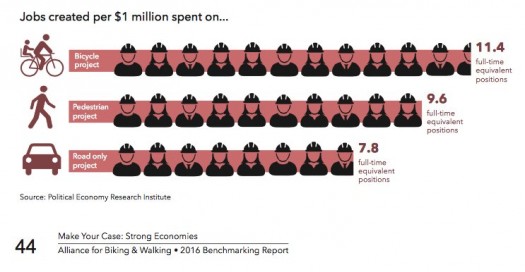Posts Tagged ‘health’
Benchmarks: Places on the move measure up
As spring tempts us to pick up the pace of our outdoor activities, it’s clear that not all places have equal footing. Those well-positioned to draw us out into health-boosting active transportation are enjoying all sorts of benefits. City planners across North America are trying hard to even the playing field. The 2016 Benchmarking Report…
Read More“General Welfare” for the Next Generation
Lately I’ve been thinking about “health, safety, and general welfare” — the basis by which zoning is typically legitimized and measured — and wondering just how great a disconnect needs to form between our purported values and our land use regulations before we admit that something’s not working.
Read MoreWhy Placemaking Matters: What’s in it for me?
When a mayoral candidate from my city wrote me to ask me to repeat in writing what I’d said the night before, I realize I need to de-wonk and make my elevator speech more memorable. Why does city planning matter to people who aren’t urban designer types? If I could take an extra five minutes…
Read MoreOn the Street: The DNA of place and the ROI of movement
The corporate culture of our government has been a carte blanche to keep doing what we’ve been doing. This culture implies that what we’ve been doing works. In business, last year’s income statement is a major driver in this year’s action plan. If a product or service was profitable, then it’s nurtured and grown this…
Read More


